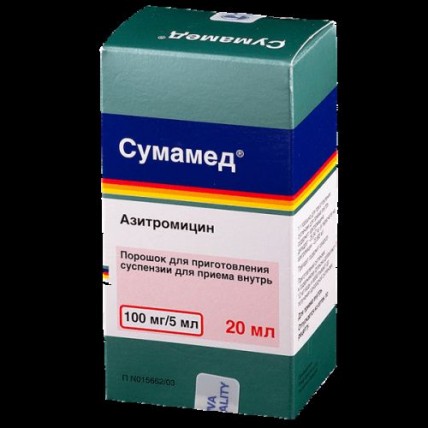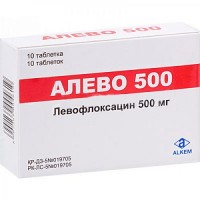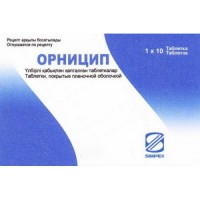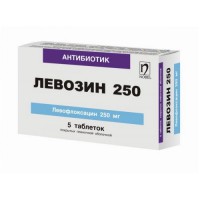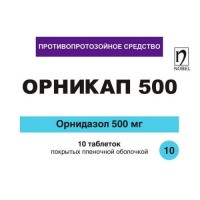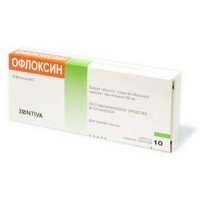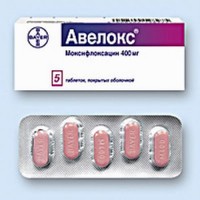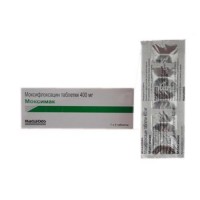Sumamed ® 100 mg / 5 ml 20 ml powder for oral suspension
- $19.70
The instruction
for medical use
of Sumamed® medicine
the Trade name
of Sumamed®
the International unlicensed
name Azithromycin Dosage Form Powder for preparation of suspension for intake, 100mg/5ml.
The structure
One bottle contains
active agent – azithromycin (in the form of dihydrate azithromycin) - 0.500 g (0.5241 g).
excipients: sucrose, sodium phosphate anhydrous, hydroxy-propitsellyuloza, xanthane gum, fragrances cherry (J7549), banana (78701-31) and vanilla (D125038), silicon colloidal anhydrous, the water purified.
The description
the Granulated powder from white till light yellow color with a characteristic smell of banana and cherry.
The prepared solution - uniform suspension of white or light yellow color with a characteristic smell of banana and cherry.
Pharmacotherapeutic group
Antimicrobial drugs for system use. Macroleads.
The code of automatic telephone exchange J01FA10
the Pharmacological
Pharmacokinetics Azithromycin properties is quickly soaked up at oral administration that is caused by its stability in acidic environment and lipophilicity. After single dose 37% of azithromycin are inside soaked up, and the peak of concentration in plasma (0.41 µg/мл) is registered in 2-3 hours. Vd makes about 31 l/kg. Azithromycin well gets into airways, bodies and fabrics of an urogenital path, a prostate, into skin and soft tissues, reaching from 1 to 9 µg/мл depending on a type of fabric. High concentration in fabrics (is 50 times higher, than concentration in plasma) and the long half-life period is caused by low linking of azithromycin with proteins of blood plasma and also its ability to get into eukaryotic cells and to concentrate in the environment with a low rn, a surrounding lysosome. The ability of azithromycin to collect in lysosomes is especially important for elimination of intracellular activators. Phagocytes deliver azithromycin to places of localization of an infection where it is released in the course of phagocytosis. But despite high concentration in phagocytes, azithromycin does not affect their function. Therapeutic concentration remains 5-7 days after intake of the last dose. At intake of azithromycin perhaps tranzitorny increase in activity of liver enzymes. Removal of a half of a dose from plasma affects reduction of a half of a dose in fabrics within 2-4 days. After administration of drug in the range from 8 till 24 o'clock the half-life period is 14-20 hours, and after administration of drug in the range from 24 till 72 o'clock – 41 hour that Sumamed of 1 times a day allows to accept. The main way of removal – with bile. About 50% are removed in not changed look, other 50% - in the form of 10 inactive metabolites. About 6% of the accepted dose are removed by kidneys.
The pharmacodynamics
Azithromycin is an antibiotic of a broad spectrum of activity, the first representative of new subgroup of makrolidny antibiotics – azaleads. Possesses bacteriostatic action, but during creation in the center of inflammation of high concentrations causes bactericidal effect. Azithromycin suppresses synthesis of protein in sensitive microorganisms, showing activity concerning the majority of strains of gram-positive, gram-negative, anaerobic, intracellular and other microorganisms:
Mycoplasma pneumoniae, Haemophilus ducreyi, Moraxella catarrhalis, Propionibacterium acnes, Gardnerella vaginalis, Actinomyces species, Bordetella pertussis, Borrelia burgdorferi, Mobiluncus species,
Haemophilus influenzae, Streptococcus pyogenes, Haemophilus parainfluenzae, Streptococcus pneumoniae, Legionella pneumophila, Streptococcus agalactiae, Neisseria meningitides, Streptococcus viridans, Neisseria gonorrhoeae, Streptococcus group C, F, G, Helicobacter pylori, Peptococcus species, Campylobacter jejuni, Peptostreptococcus, Pasteurella multocida, Fusobacterium necrophorum, Pasteurella haemolytica, Clostridium perfringens, Brucella melitensis, Bacteroides bivius, Bordetella parapertussis, Chlamydia trachomatis, Vibrio cholerae, Chlamydia pneumoniae, Vibrio parahaemolyticus, Ureaplasma urealyticum, Plesiomonas shigelloides, Listeria monocytogenes, Staphylococcus epidermidis, Staphylococcus aureus * (*эритромицин – a sensitive strain),
Escherichia coli, Bacteroides fragilis, Salmonella enteritidis, Bacteroides oralis, Salmonella typhi, Clostridium difficile, Shigella sonnei, Eubacterium lentum, Yersinia enterocolitica, Fusobacterium nucleatum, Acinetobacter calcoaceticus, Aeromonas hydrophilia.
Indications
- upper respiratory tract infections (bacterial pharyngitis / tonsillitis, sinusitis, average otitis)
- lower respiratory tract infections (bacterial bronchitis, interstitial and alveolar pneumonia, exacerbation of chronic bronchitis)
- infections of skin and soft tissues (the chronic migrating erythema - an initial stage of a disease of Lyme, an ugly face, impetigo, secondary pyodermatoses)
- the infections of a stomach and a duodenum caused by Helicobacter pylori
- an infection of an urogenital path (gonorrheal and not gonorrheal urethritis and/or a cervicitis)
Sumamed in the form of oral suspension accept the Way of use and a dose 1 time a day in 1 hour prior to or in 2 hours after a meal by means of a measured spoon or the dosing syringe.
Infections of upper and lower airways, skin and soft tissues (except for the chronic migrating erythema)
the Course dose makes 30 mg/kg.
Two schemes of treatment are applied:
1) 10 mg/kg of body weight once a day within 3 days
2) 10 mg/kg of body weight in the first day and on 5 mg/kg of body weight from the 2nd to the 5th day
to Children appoint drug proceeding from weight:
The body weight
of Sumamed® powder for preparation of oral suspension of 100 mg / 5
more than 14 kg is recommended to Children with body weight by ml of 5 kg 2.5 ml (50 mg) of 6 kg 3 ml (60 mg) of 7 kg 3.5 ml (70 mg) of 8 kg 4 ml (80 mg) of 9 kg 4.5 ml (90 mg) of 10-14 kg 5 ml (100 mg) purpose of the prolonged suspension form.
The chronic migrating erythema
the Course dose of drug makes 60 mg/kg: once on 20 mg/kg – in the 1st day and on 10 mg/kg - in the subsequent, from 2 to 5 days.
Diseases of a stomach and a 12-perstny gut, associated with Helicobacter pylori:
20 mg/kg of body weight once a day in combination with anti-secretory means and other medicines.
In case the dose of drug was passed, it needs to be accepted at once, and then to accept the subsequent doses at an interval of the 24th hour.
A way of preparation of suspension
For preparation of 20 ml of suspension it is necessary to add to the bottle containing 100 mg of azithromycin 12 ml of water by means of the dosing syringe.
Before reception the bottle contents are carefully shaken up before receiving uniform suspension. Directly after intake of suspension to the child allow to drink several drinks of liquid to wash away and swallow the remained amount of suspension in an oral cavity.
Side effects
- vomiting, diarrhea, an abdominal pain, nausea, a meteorism, a constipation
- tranzitorny rise in level of aminotransferases of a liver, bilirubin, eosinophils in blood. Indicators return to norm in 2-3 weeks after the end of therapy
- cholestatic jaundice, hepatitis
- reactions of hypersensitivity (reddening, skin rash, an itching, a Quincke's disease, photosensitivity)
Is extremely rare
- a multiformny erythema, Stephen-Johnson's syndrome and a toxic epidermal necrolysis
- fatigue, a headache, dizziness, disorders of taste and sense of smell, paresthesia, a syncope, concern, nervousness, insomnia
- heartbeat, arrhythmias
- an arthralgia, interstitial nephrite, an acute renal failure.
Contraindications
- hypersensitivity to makrolidny antibiotics
- heavy abnormal liver functions and kidneys
Medicinal interactions
Antacids substantially reduce Sumamed's absorption suspensions therefore the drug should be taken in one hour prior to or in two hours after intake of these drugs. Makrolidny antibiotics interact with digoxin, cyclosporine, astemizoly, triazolamy, midazolam or alfentanily. It is recommended to make careful observation at a concomitant use of these drugs.
Azithromycin does not connect R-450 cytochrome and therefore does not interact with theophylline, terfenadiny, warfarin, carbamazepine, Methylprednisolonum and Cimetidinum.
The special
indications Sumamed of 100 mg / 5 the ml is intended for use for children. Duration of use of drug should not exceed the terms specified in the instruction. With care patients should appoint Sumamed from the liver broken by function.
Overdose
of Data on overdose Sumamed is absent. The overdose by makrolidny antibiotics is shown by a temporary hearing loss, heavy nausea, vomiting and diarrhea. In this case it is necessary to cause vomiting and to immediately render symptomatic treatment.
The form of release and packing
place the Granulated powder in bottles from polyethylene of high density, with the twisting cover with protection against opening by children.
On 1 bottle with a measured spoon and/or the syringe for dosing together with the instruction for use in the state and Russian languages place in a pack from cardboard.
To Store storage conditions at a temperature not above 25 °C.
To store out of children's reach!
A period of storage
2 years
the Prepared suspension: 5 days.
Not to apply after an expiration date.
Prescription status
According to the prescription
the Producer Pliva Hrvatsk of of the lake
of the island of Prilaz of a barun of Filippovich 25,
10000 Zagreb, Croatia
the Name and the country of the owner of the registration certificate
Pliva Hrvatsk of of the lake of the lake, Croatia
the Address of the organization accepting in the territory of the Republic of Kazakhstan claims from consumers on quality of products (goods):
Representative office
"Teva Chesh Indastriyez of neuter about" in
PK 050000 Republic of Kazakhstan
Almaty, Al-Farabi Avenue 13,
Biness Nurla Tau's center 1v office 305,
306 Phone number, fax (727) 311-10-66, 311-10-68
E-mail teva @
to Develop teva.co.il
for medical use
of Sumamed® medicine
the Trade name
of Sumamed®
the International unlicensed
name Azithromycin Dosage Form Powder for preparation of suspension for intake, 100mg/5ml.
The structure
One bottle contains
active agent – azithromycin (in the form of dihydrate azithromycin) - 0.500 g (0.5241 g).
excipients: sucrose, sodium phosphate anhydrous, hydroxy-propitsellyuloza, xanthane gum, fragrances cherry (J7549), banana (78701-31) and vanilla (D125038), silicon colloidal anhydrous, the water purified.
The description
the Granulated powder from white till light yellow color with a characteristic smell of banana and cherry.
The prepared solution - uniform suspension of white or light yellow color with a characteristic smell of banana and cherry.
Pharmacotherapeutic group
Antimicrobial drugs for system use. Macroleads.
The code of automatic telephone exchange J01FA10
the Pharmacological
Pharmacokinetics Azithromycin properties is quickly soaked up at oral administration that is caused by its stability in acidic environment and lipophilicity. After single dose 37% of azithromycin are inside soaked up, and the peak of concentration in plasma (0.41 µg/мл) is registered in 2-3 hours. Vd makes about 31 l/kg. Azithromycin well gets into airways, bodies and fabrics of an urogenital path, a prostate, into skin and soft tissues, reaching from 1 to 9 µg/мл depending on a type of fabric. High concentration in fabrics (is 50 times higher, than concentration in plasma) and the long half-life period is caused by low linking of azithromycin with proteins of blood plasma and also its ability to get into eukaryotic cells and to concentrate in the environment with a low rn, a surrounding lysosome. The ability of azithromycin to collect in lysosomes is especially important for elimination of intracellular activators. Phagocytes deliver azithromycin to places of localization of an infection where it is released in the course of phagocytosis. But despite high concentration in phagocytes, azithromycin does not affect their function. Therapeutic concentration remains 5-7 days after intake of the last dose. At intake of azithromycin perhaps tranzitorny increase in activity of liver enzymes. Removal of a half of a dose from plasma affects reduction of a half of a dose in fabrics within 2-4 days. After administration of drug in the range from 8 till 24 o'clock the half-life period is 14-20 hours, and after administration of drug in the range from 24 till 72 o'clock – 41 hour that Sumamed of 1 times a day allows to accept. The main way of removal – with bile. About 50% are removed in not changed look, other 50% - in the form of 10 inactive metabolites. About 6% of the accepted dose are removed by kidneys.
The pharmacodynamics
Azithromycin is an antibiotic of a broad spectrum of activity, the first representative of new subgroup of makrolidny antibiotics – azaleads. Possesses bacteriostatic action, but during creation in the center of inflammation of high concentrations causes bactericidal effect. Azithromycin suppresses synthesis of protein in sensitive microorganisms, showing activity concerning the majority of strains of gram-positive, gram-negative, anaerobic, intracellular and other microorganisms:
Mycoplasma pneumoniae, Haemophilus ducreyi, Moraxella catarrhalis, Propionibacterium acnes, Gardnerella vaginalis, Actinomyces species, Bordetella pertussis, Borrelia burgdorferi, Mobiluncus species,
Haemophilus influenzae, Streptococcus pyogenes, Haemophilus parainfluenzae, Streptococcus pneumoniae, Legionella pneumophila, Streptococcus agalactiae, Neisseria meningitides, Streptococcus viridans, Neisseria gonorrhoeae, Streptococcus group C, F, G, Helicobacter pylori, Peptococcus species, Campylobacter jejuni, Peptostreptococcus, Pasteurella multocida, Fusobacterium necrophorum, Pasteurella haemolytica, Clostridium perfringens, Brucella melitensis, Bacteroides bivius, Bordetella parapertussis, Chlamydia trachomatis, Vibrio cholerae, Chlamydia pneumoniae, Vibrio parahaemolyticus, Ureaplasma urealyticum, Plesiomonas shigelloides, Listeria monocytogenes, Staphylococcus epidermidis, Staphylococcus aureus * (*эритромицин – a sensitive strain),
Escherichia coli, Bacteroides fragilis, Salmonella enteritidis, Bacteroides oralis, Salmonella typhi, Clostridium difficile, Shigella sonnei, Eubacterium lentum, Yersinia enterocolitica, Fusobacterium nucleatum, Acinetobacter calcoaceticus, Aeromonas hydrophilia.
Indications
- upper respiratory tract infections (bacterial pharyngitis / tonsillitis, sinusitis, average otitis)
- lower respiratory tract infections (bacterial bronchitis, interstitial and alveolar pneumonia, exacerbation of chronic bronchitis)
- infections of skin and soft tissues (the chronic migrating erythema - an initial stage of a disease of Lyme, an ugly face, impetigo, secondary pyodermatoses)
- the infections of a stomach and a duodenum caused by Helicobacter pylori
- an infection of an urogenital path (gonorrheal and not gonorrheal urethritis and/or a cervicitis)
Sumamed in the form of oral suspension accept the Way of use and a dose 1 time a day in 1 hour prior to or in 2 hours after a meal by means of a measured spoon or the dosing syringe.
Infections of upper and lower airways, skin and soft tissues (except for the chronic migrating erythema)
the Course dose makes 30 mg/kg.
Two schemes of treatment are applied:
1) 10 mg/kg of body weight once a day within 3 days
2) 10 mg/kg of body weight in the first day and on 5 mg/kg of body weight from the 2nd to the 5th day
to Children appoint drug proceeding from weight:
The body weight
of Sumamed® powder for preparation of oral suspension of 100 mg / 5
more than 14 kg is recommended to Children with body weight by ml of 5 kg 2.5 ml (50 mg) of 6 kg 3 ml (60 mg) of 7 kg 3.5 ml (70 mg) of 8 kg 4 ml (80 mg) of 9 kg 4.5 ml (90 mg) of 10-14 kg 5 ml (100 mg) purpose of the prolonged suspension form.
The chronic migrating erythema
the Course dose of drug makes 60 mg/kg: once on 20 mg/kg – in the 1st day and on 10 mg/kg - in the subsequent, from 2 to 5 days.
Diseases of a stomach and a 12-perstny gut, associated with Helicobacter pylori:
20 mg/kg of body weight once a day in combination with anti-secretory means and other medicines.
In case the dose of drug was passed, it needs to be accepted at once, and then to accept the subsequent doses at an interval of the 24th hour.
A way of preparation of suspension
For preparation of 20 ml of suspension it is necessary to add to the bottle containing 100 mg of azithromycin 12 ml of water by means of the dosing syringe.
Before reception the bottle contents are carefully shaken up before receiving uniform suspension. Directly after intake of suspension to the child allow to drink several drinks of liquid to wash away and swallow the remained amount of suspension in an oral cavity.
Side effects
- vomiting, diarrhea, an abdominal pain, nausea, a meteorism, a constipation
- tranzitorny rise in level of aminotransferases of a liver, bilirubin, eosinophils in blood. Indicators return to norm in 2-3 weeks after the end of therapy
- cholestatic jaundice, hepatitis
- reactions of hypersensitivity (reddening, skin rash, an itching, a Quincke's disease, photosensitivity)
Is extremely rare
- a multiformny erythema, Stephen-Johnson's syndrome and a toxic epidermal necrolysis
- fatigue, a headache, dizziness, disorders of taste and sense of smell, paresthesia, a syncope, concern, nervousness, insomnia
- heartbeat, arrhythmias
- an arthralgia, interstitial nephrite, an acute renal failure.
Contraindications
- hypersensitivity to makrolidny antibiotics
- heavy abnormal liver functions and kidneys
Medicinal interactions
Antacids substantially reduce Sumamed's absorption suspensions therefore the drug should be taken in one hour prior to or in two hours after intake of these drugs. Makrolidny antibiotics interact with digoxin, cyclosporine, astemizoly, triazolamy, midazolam or alfentanily. It is recommended to make careful observation at a concomitant use of these drugs.
Azithromycin does not connect R-450 cytochrome and therefore does not interact with theophylline, terfenadiny, warfarin, carbamazepine, Methylprednisolonum and Cimetidinum.
The special
indications Sumamed of 100 mg / 5 the ml is intended for use for children. Duration of use of drug should not exceed the terms specified in the instruction. With care patients should appoint Sumamed from the liver broken by function.
Overdose
of Data on overdose Sumamed is absent. The overdose by makrolidny antibiotics is shown by a temporary hearing loss, heavy nausea, vomiting and diarrhea. In this case it is necessary to cause vomiting and to immediately render symptomatic treatment.
The form of release and packing
place the Granulated powder in bottles from polyethylene of high density, with the twisting cover with protection against opening by children.
On 1 bottle with a measured spoon and/or the syringe for dosing together with the instruction for use in the state and Russian languages place in a pack from cardboard.
To Store storage conditions at a temperature not above 25 °C.
To store out of children's reach!
A period of storage
2 years
the Prepared suspension: 5 days.
Not to apply after an expiration date.
Prescription status
According to the prescription
the Producer Pliva Hrvatsk of of the lake
of the island of Prilaz of a barun of Filippovich 25,
10000 Zagreb, Croatia
the Name and the country of the owner of the registration certificate
Pliva Hrvatsk of of the lake of the lake, Croatia
the Address of the organization accepting in the territory of the Republic of Kazakhstan claims from consumers on quality of products (goods):
Representative office
"Teva Chesh Indastriyez of neuter about" in
PK 050000 Republic of Kazakhstan
Almaty, Al-Farabi Avenue 13,
Biness Nurla Tau's center 1v office 305,
306 Phone number, fax (727) 311-10-66, 311-10-68
E-mail teva @
to Develop teva.co.il
